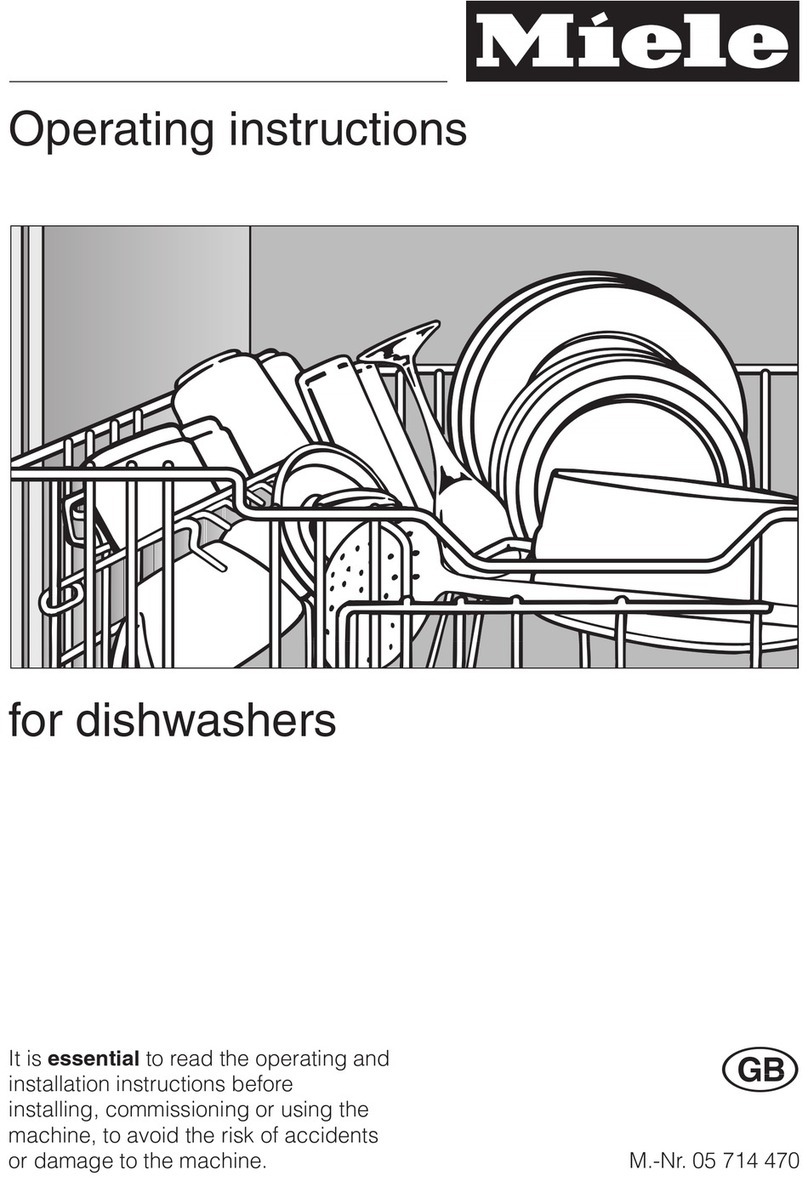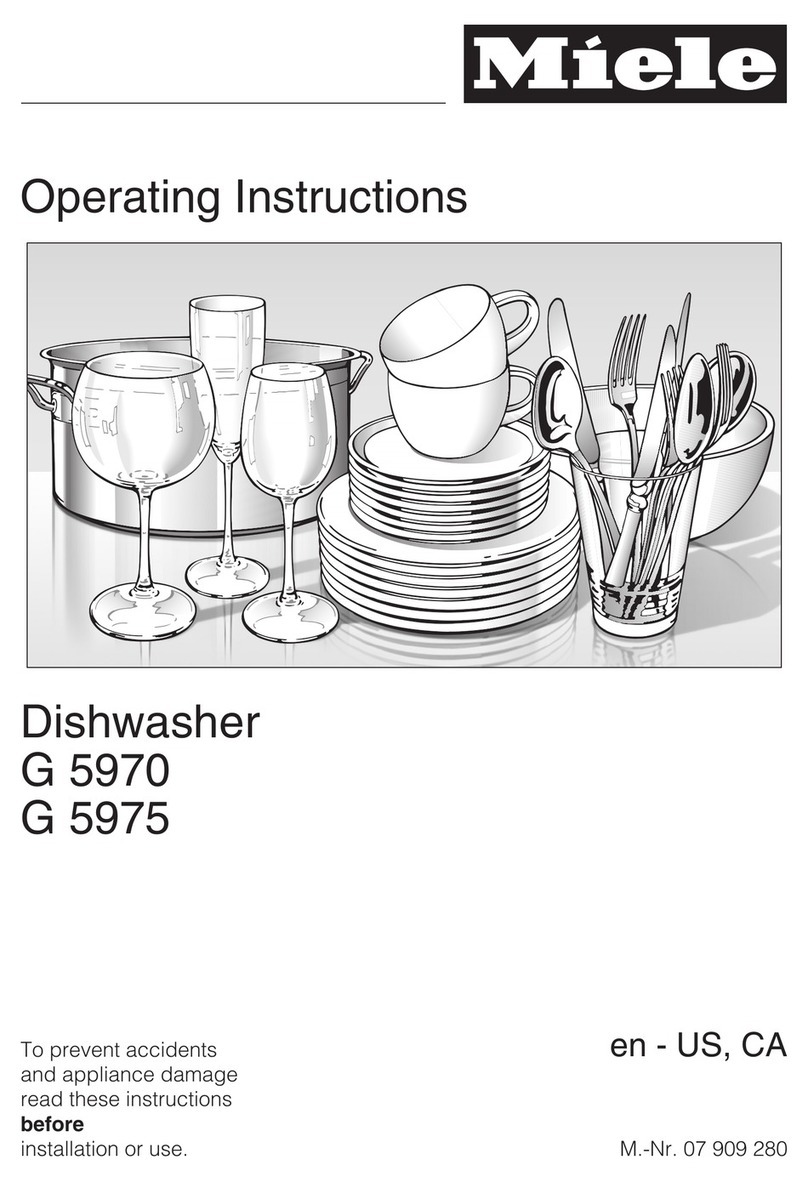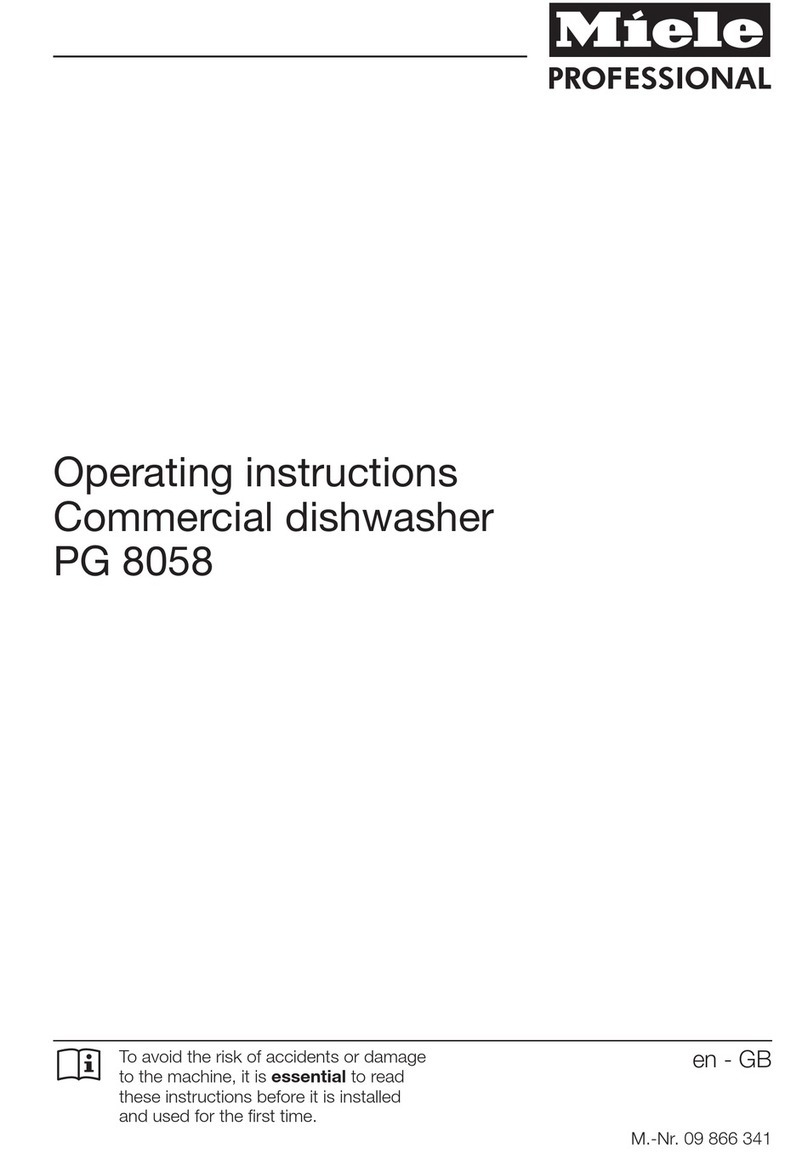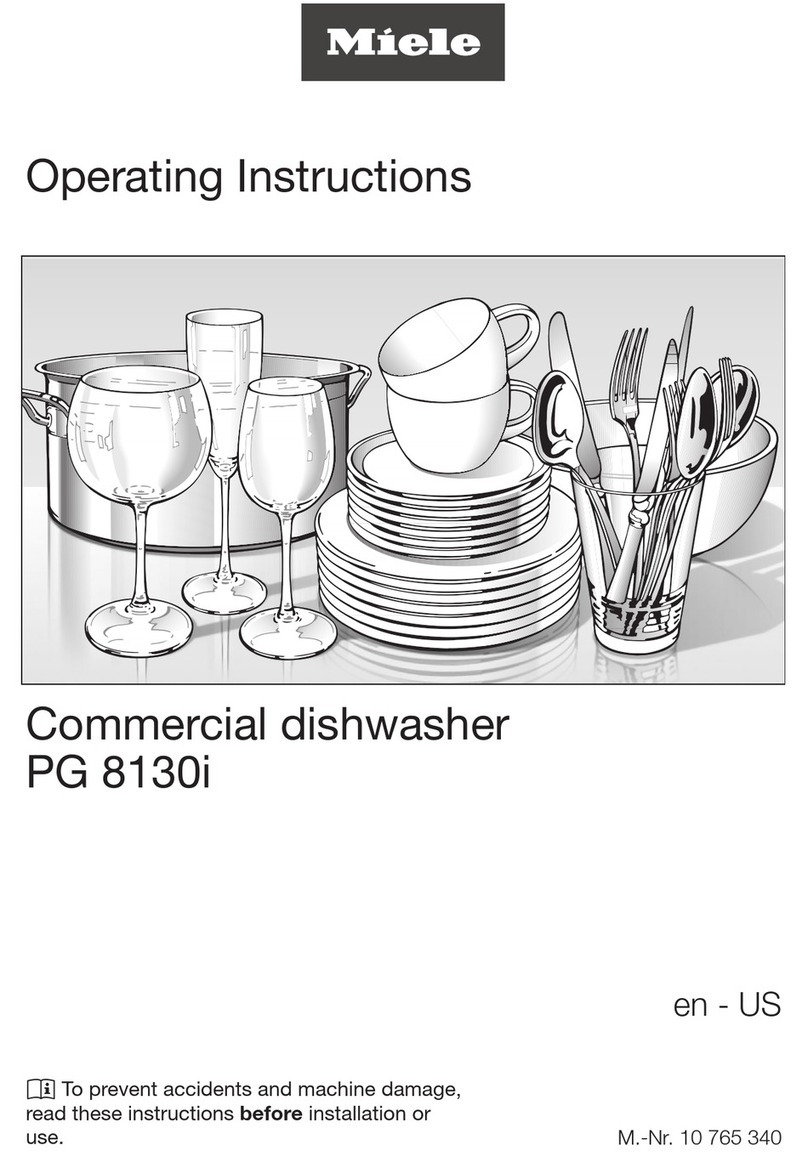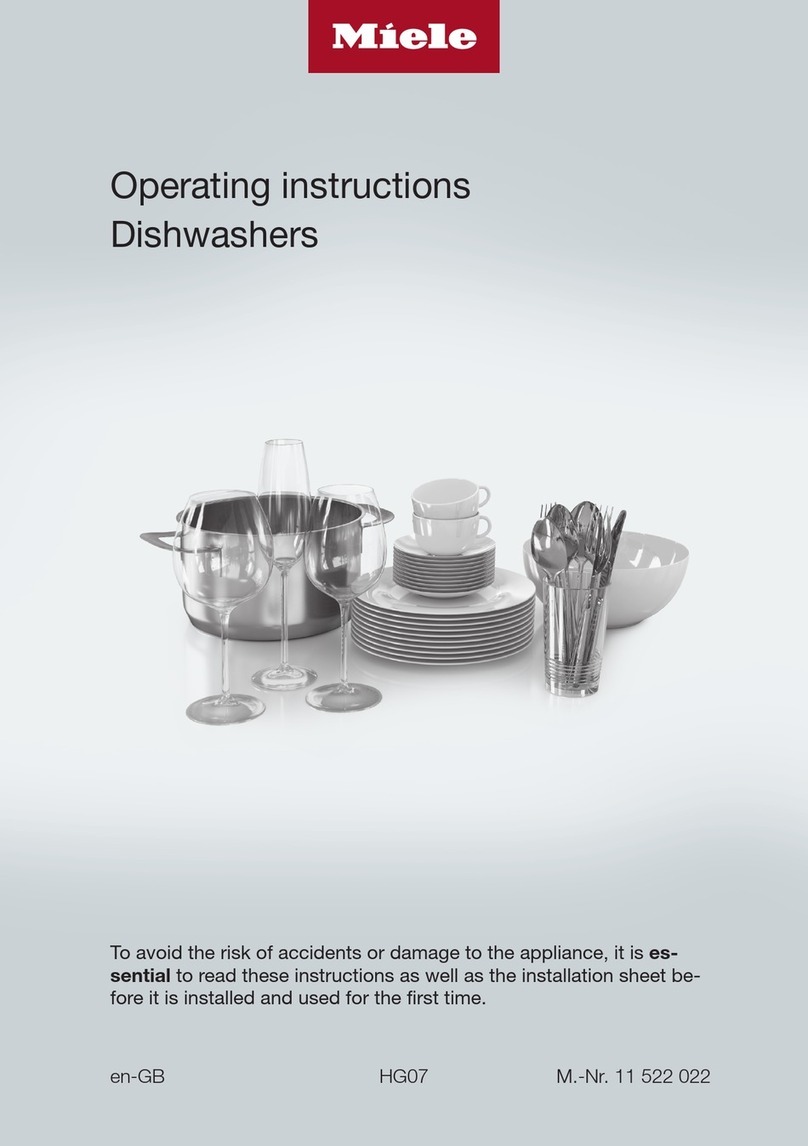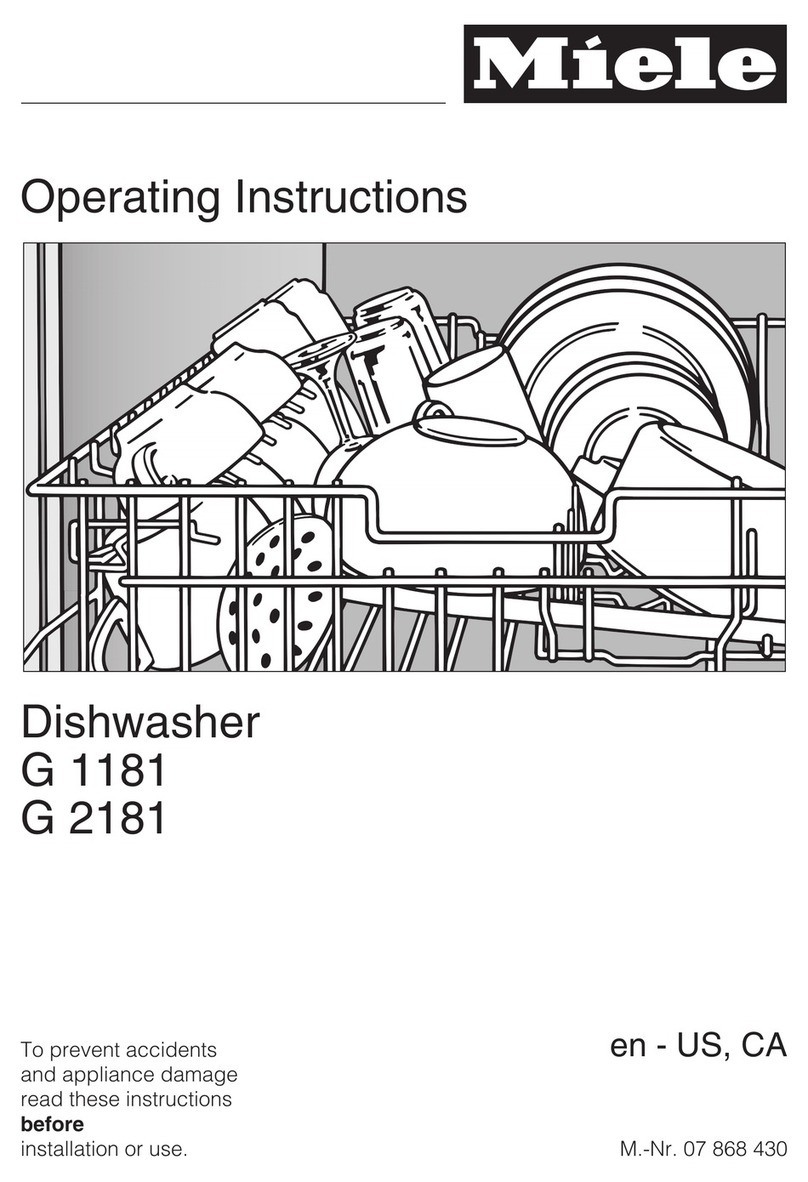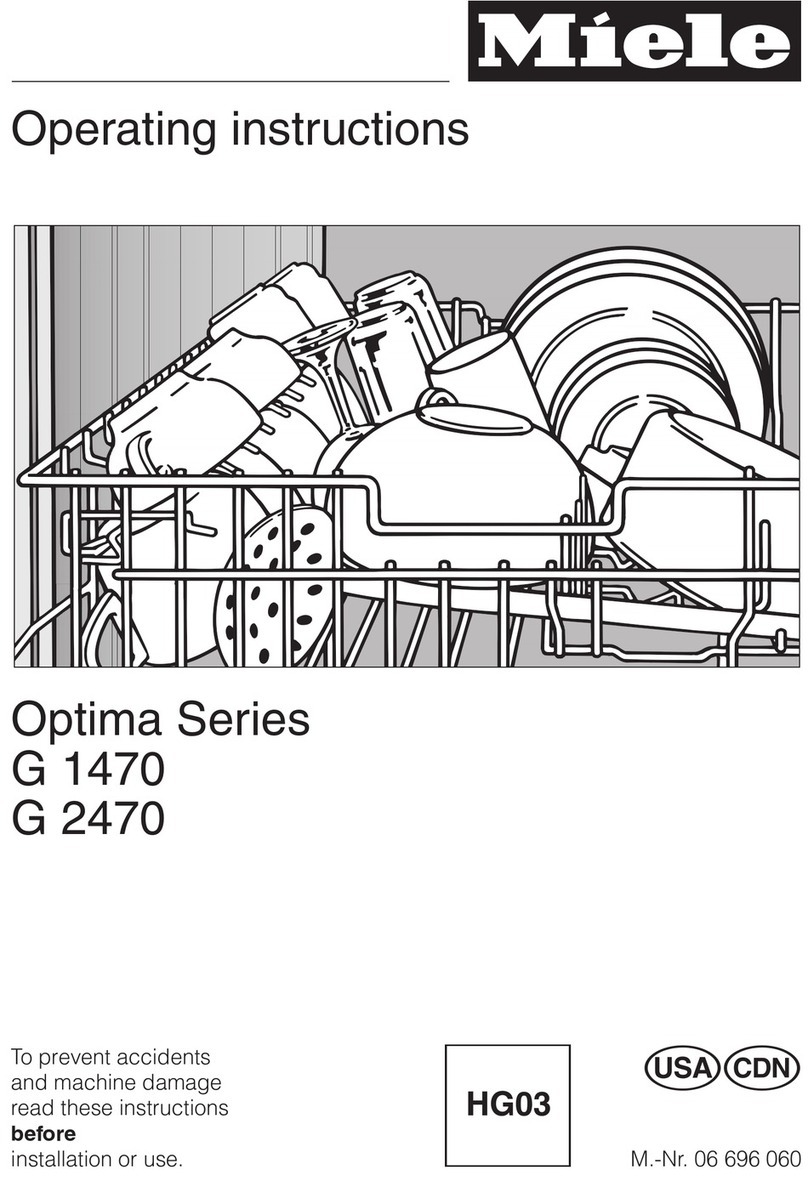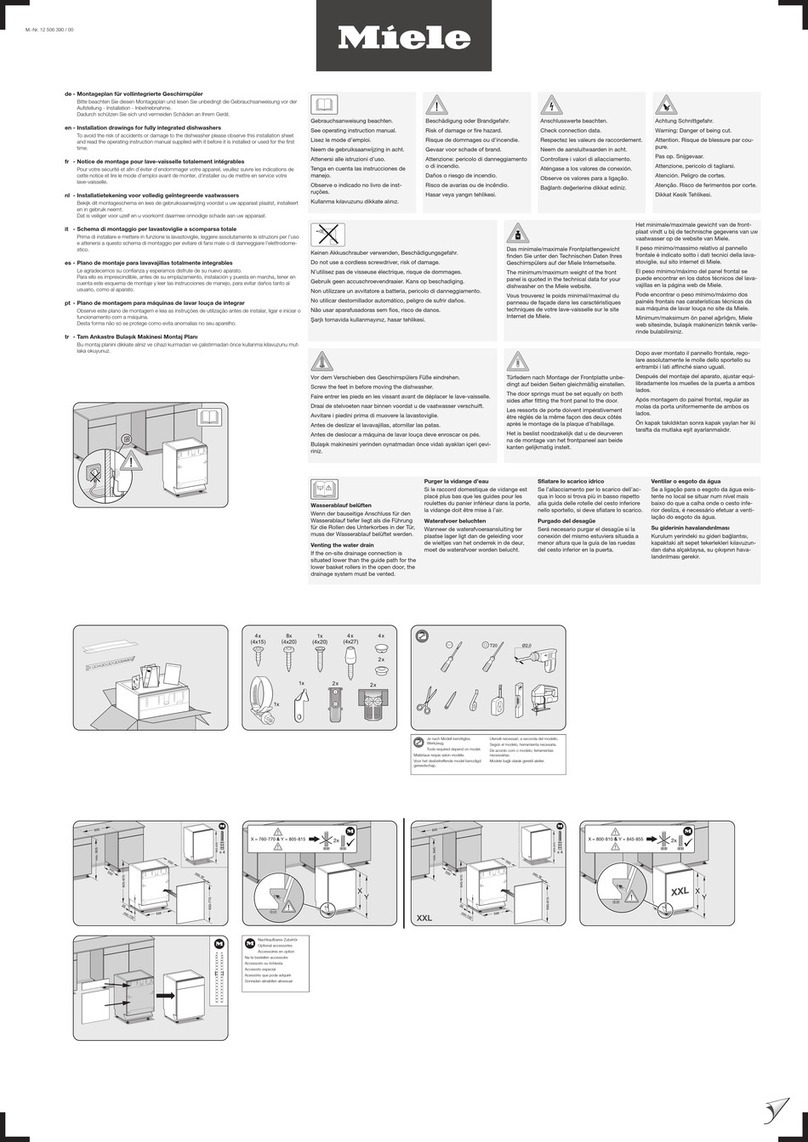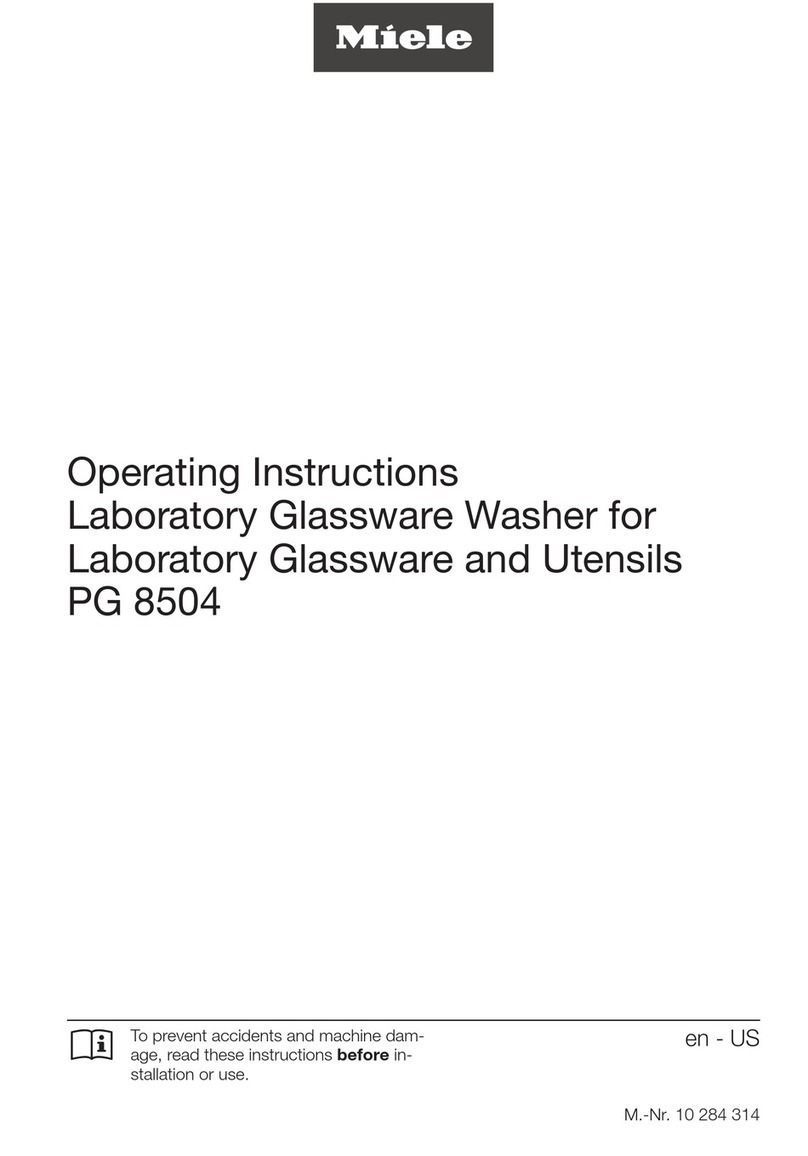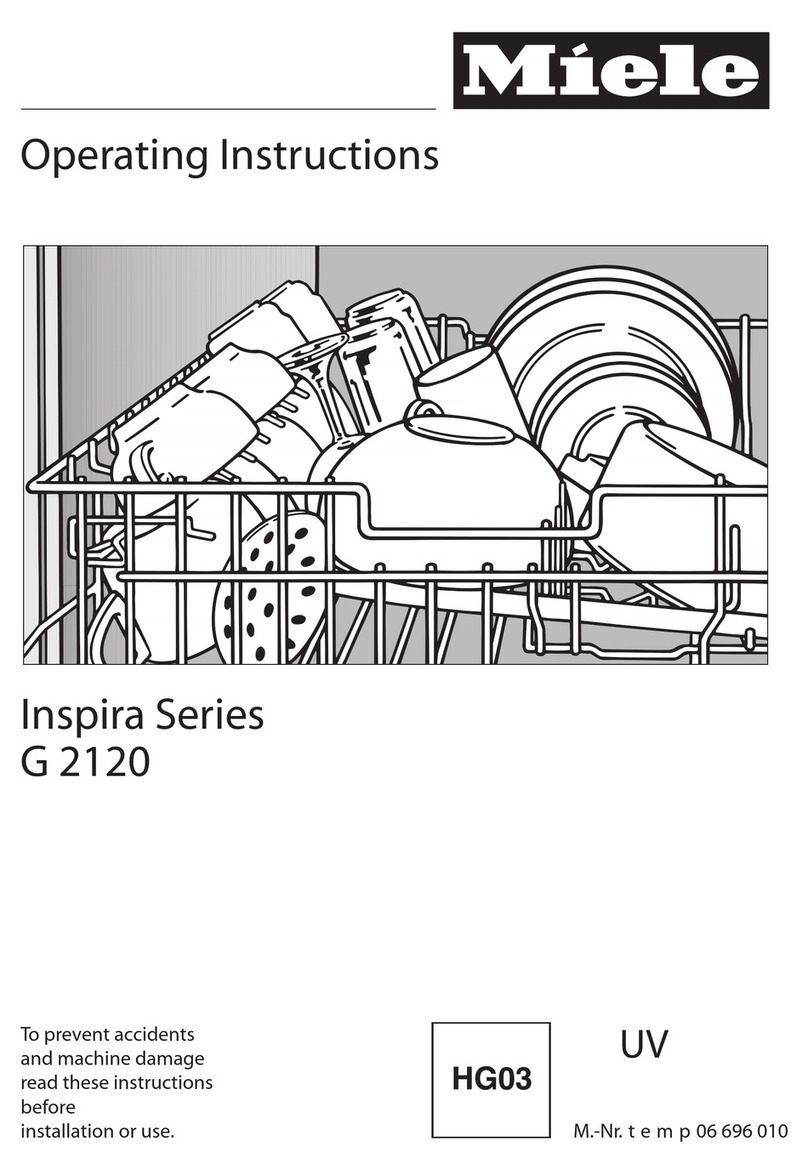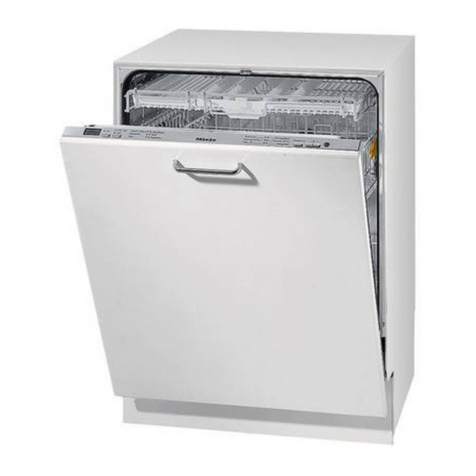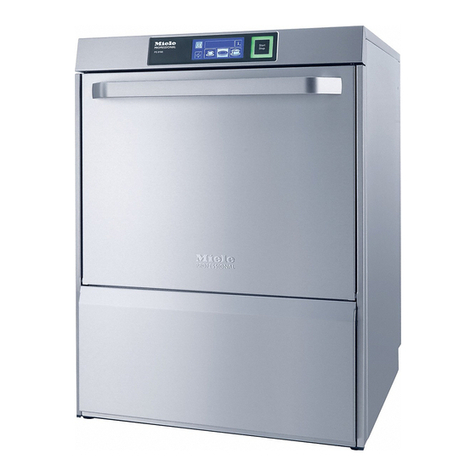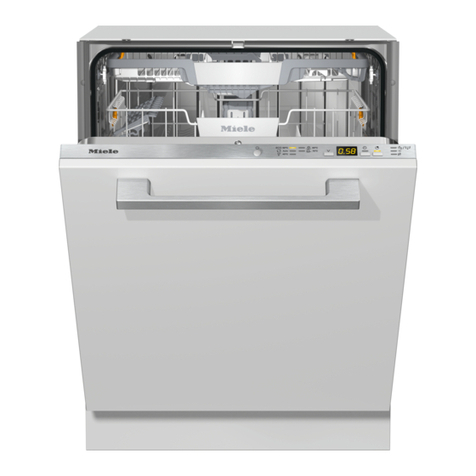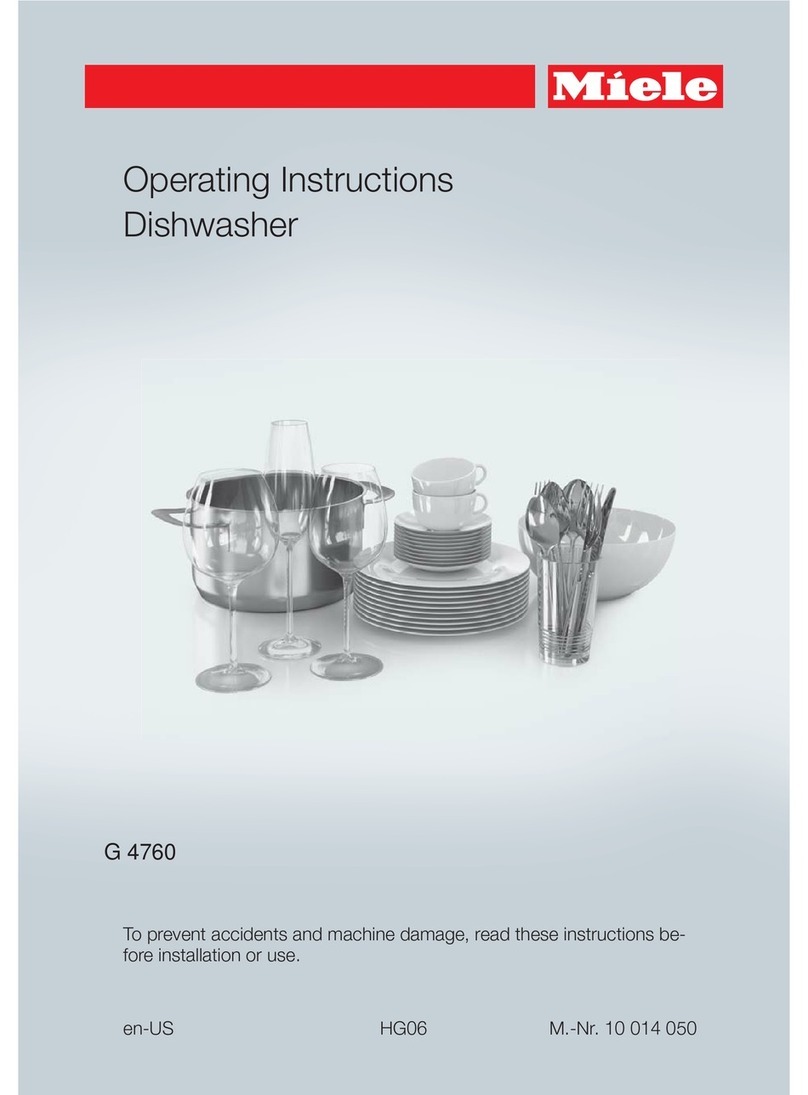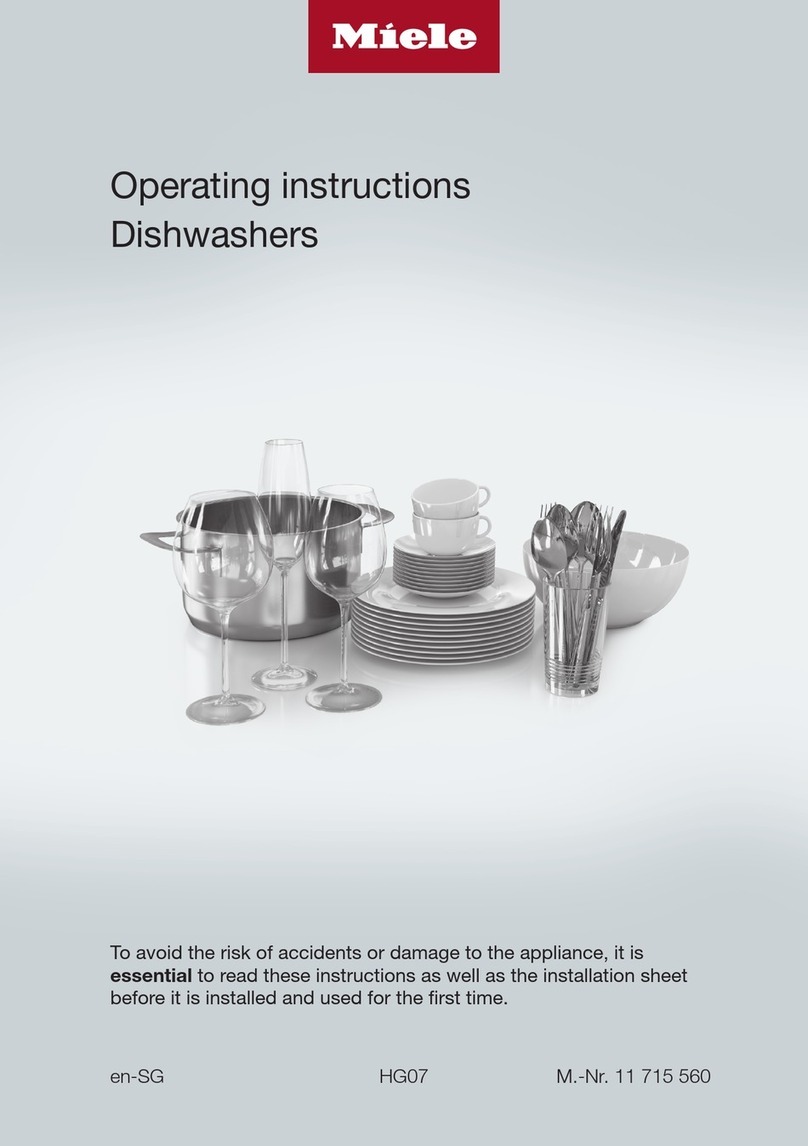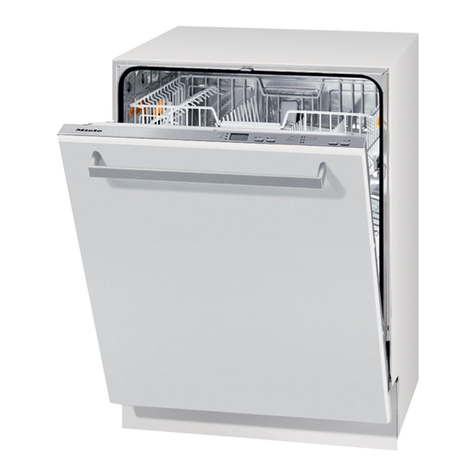~The machine must be disconnected
from the mains electricity supply before
any maintenance or repair work is
carried out. Do not reconnect it until the
maintenance or repair work has been
successfully completed.
The following points should be
observed to assist in maintaining
quality standards when processing
laboratory glassware:
~If it is necessary to interrupt a
programme in exceptional
circumstances, this may only be done
by authorised personnel.
~Under certain circumstances
chemical agents can cause damage to
the machine. Follow the
recommendations of the chemical
agent manufacturer. In the event of any
damage or material deterioration
please contact Miele.
~Pre-treatments with cleaning or
disinfecting agents can create foam, as
can certain types of soiling and
chemical agents. Foam can have an
adverse effect on the cleaning process.
~Foam must not be able to escape
from the wash cabinet. It would hinder
the correct functioning of the machine.
~Check the process used regularly to
monitor foaming levels.
~To avoid the risk of damage to the
machine and any accessories used
with it caused by chemical agents,
soiling and any reaction between the
two, please read the notes in "Chemical
processes and technology".
~Where a chemical additive is
recommended on technical application
grounds (e.g. a cleaning agent), this
does not imply that the manufacturer of
the machine accepts liability for the
effect of the chemical on the items
being cleaned.
Please be aware that changes in
formulation, storage conditions etc.
which may not be publicised by the
chemical manufacturer, can have a
negative effect on the cleaning result.
~When using chemical agents such
as cleaning agent it is essential that the
manufacturer's instructions are
followed. Only use chemical agents for
the purpose they are designed for as
specified by the manufacturer, to the
exclusion of other chemicals, to avoid
such dangers as chemical reactions
and material damage.
~In critical applications where very
stringent requirements have to be met,
it is strongly recommended that all the
relevant factors for the process, such
as cleaning agent, water quality etc.
are discussed with Miele.
~If the cleaning and rinsing results
are subject to particularly stringent
requirements (e.g. chemical analysis),
a regular quality control test should be
carried out by the user to ensure that
required standards of cleanliness are
being achieved.
~Mobile units, baskets and inserts
should only be used for the purpose
they are designed for.
Hollow items must be thoroughly
cleaned, internally and externally.
Warning and Safety instructions
10
